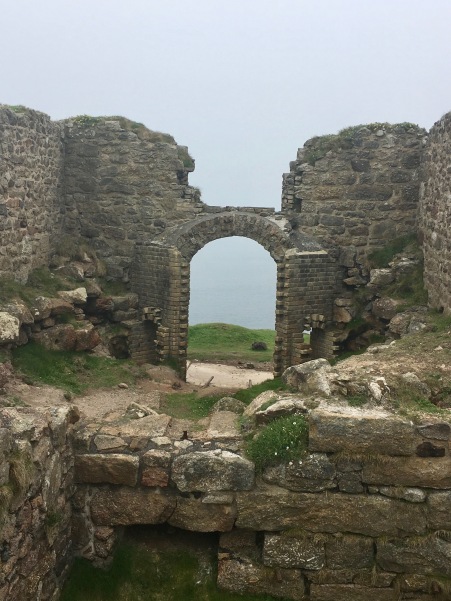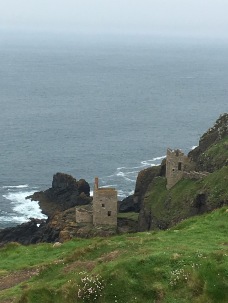Right at the very end of Cornwall, just to the north of Lands End, lies The Tin Coast a seven mile stretch of coast with a rich mining history. It’s part of the Cornwall and West Devon Mining Landscape, inscribed in 2006, UNESCO World Heritage Site.
“Cornwall is famous for its wild and beautiful coastline and its picturesque coastal villages. As visitors scan this unique landscape they will notice chimneys dotted here and there, strangely shaped grassland and open quarries. These record the remains of Cornwall’s industrial past much of which has now gained World Heritage status.” (Adapted from Smith and Huxley’s ‘World Heritage Sites of Great Britain & Ireland’)
The driver of the bus from Penzance dropped me off at the lane that leads to the Botallack mine site and National Trust Visitor Centre. There I picked up leaflets and talked with the wardens planning my walking route and making a note which locations to visit before heading on to Levant Mine to pick up a guided tour.

Arriving at Botallack
 The Count House National Trust Visitor Centre
The Count House National Trust Visitor Centre
The Count House was the mine office and its prosperous, public face. Attached to the left is the carpenter’s shop which now serves as the small cafe, shop, museum and information centre.
West Wheal Owles and Wheal Edward
I first walked back to visit the ‘wheals’ or engine houses. Many of the former buildings at the Botallack site featured in recent filming of Winston Graham’s ‘Poldark’ novels for television. I haven’t actually seen the series but it’s been very popular. Needless to say, there’s a Poldark Trail to follow in Cornwall.
I had picked up a leaflet from the Count House and set about finding the mining ruins pictured.

Headframe or winding gear. Originally timber, but later made of steel, with wheels and ropes powered by an engine the ore would raised to the ground.
Looking down at the Crowns engine houses

Arsenic Labyrinth. A series of chambers in which hot gas from the calciner (furnace) would cool leaving deposits of arsenic on the walls.

Dressing Floors. Note the ‘buddle’ on the far left used for separating tin from the waste.

Entrance to the giant oven or calciner where impurities in the ore were burnt off.
Having spent some time exploring the site it was time to start walking along the Southwest Coast Path to the National Trust mine site at Levant a mile or so north of Botallack.







I’m catching up in anticipation of your visit — you say you haven’t watched the current Poldark (a pale shadow of the original, books and series) but if my memory serves me well, Milord and I watched the first series while employed at Salcombe. Ask if he remembers — I believe it resulted in many badly rendered Cornish accent jokes.
Oh he remembers alright! And the ‘jokes’ are still being played out.